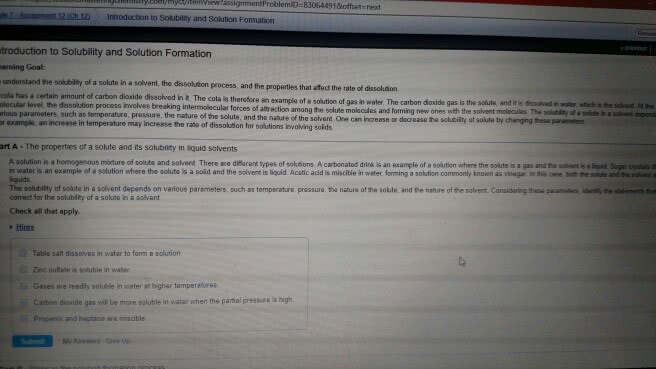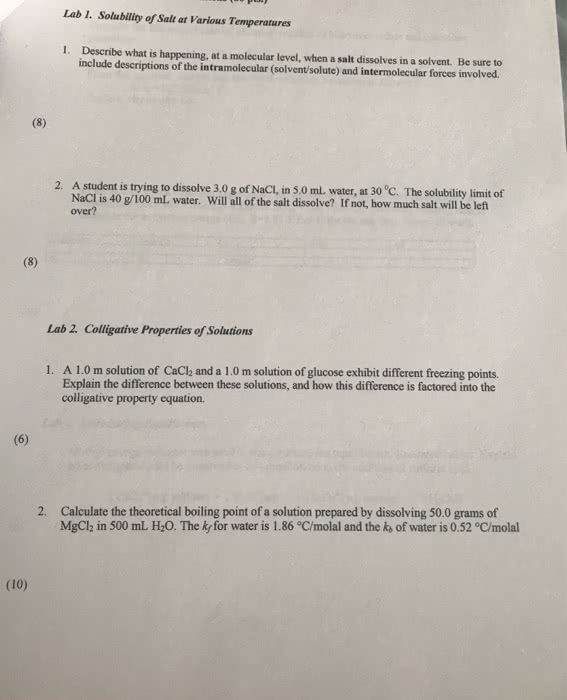CHEM 1201 Lecture Notes - Lecture 13: Partial Pressure, Hydrogen Bond, Melting Point
Document Summary
A solution is a homogeneous mixture of solute (present in smallest amount) and solvent (present in largest amount). Solutes and solvents are the components of the solution. A saturated solution contains the maximum amount of solute. In the process of making solutions, intermolecular forces become rearranged. The water h-bonds have to be interrupted, Polar liquids tend to dissolve in polar solvents, (like dissolves like). Intermolecular forces are important: water and ethanol are miscible because hydrogen bonding in both pure liquids are re-established in the mixture. Factors to consider in determining solubility in various solvents: the number of carbon atoms in a chain affect solubility: the more c atoms, the. Less soluble in water: the number of -oh groups within a molecule increases solubility in water (via hydrogen bonding). Ex: predict whether each of the following substances is more likely to dissolve in carbon tetrachloride, ccl4, which is nonpolar, or in water, which is polar: c7h16, nahco3, hcl, i2.



